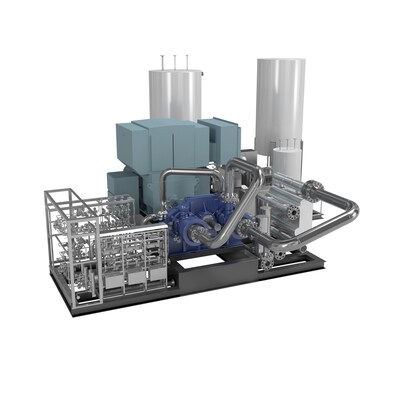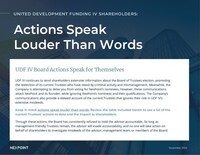2 Ultra-High-Yield Real Estate Stocks to Buy Hand Over Fist and 1 to Avoid
Real estate investment trusts (REITs) can be great income-producing investments. They tend to offer much higher dividend yields (4% on average these days compared to a sub-1.5% dividend yield on the S&P 500). Meanwhile, the best ones aim to consistently increase their payments.
W.P. Carey (NYSE: WPC) and EPR Properties (NYSE: EPR) are ideal REITs for those seeking a sustainable and growing income stream. They’re much better options than the much higher-yielding Annaly Capital Management (NYSE: NLY), which might need to cut its dividend once again.
A high-risk, high-yield dividend stock
Annaly Capital Management currently offers a jaw-dropping dividend yield of nearly 13%. That’s almost 10 times higher than the S&P 500. While mortgage REITs like Annaly tend to have higher yields, this one seems to be at a higher risk of reduction than others in the sector.
The concern is the continued decline in Annaly’s earnings available for distribution (EAD). The REIT’s EAD was $0.68 per share in the second quarter, only slightly above its dividend payment. On a positive note, that was an improvement from the first-quarter level when EAD fell below the payout at $0.64 per share. However, it’s well below the year-ago level ($0.72 per share) and where it was at the end of 2022 ($0.89 per share). The company’s declining EAD forced it to cut its dividend by 26% in early 2023.
That wasn’t Annaly’s first dividend reduction. It likely won’t be its last, given the continued decline in its EAD. Because of that, income-focused investors should avoid this REIT.
Back on a growth trajectory
W.P. Carey is a diversified REIT focused on owning operationally critical properties net leased to high-quality tenants. It owns nearly 1,300 single-tenant industrial, warehouse, and retail properties across North America and Europe. It also owns 89 self-storage operating properties. The REIT’s net leases provide it with stable income that grows each year due to built-in rental escalation clauses that either raise rents at a fixed rate or one linked to inflation. That stable income supports the REIT’s nearly 6%-yielding dividend.
Until last year, W.P. Carey had a sterling record of increasing its dividend. However, it made the strategic decision to exit the office sector by spinning off and selling all its office properties. As a result, it also reset its dividend to reflect its lower income level and a desire to have a more conservative dividend payout ratio.
W.P. Carey has been steadily rebuilding its portfolio since then, focusing on property sectors with better long-term fundamentals, like industrial real estate. It expects to invest $1.25 billion to $1.75 billion in new properties this year (it had already secured $641 million of new investments by the end of July), which puts it on track to start growing its cash flow per share in the second half of the year. These new investments have enabled the REIT to already start rebuilding its payout, raising it twice this year. That steady upward trend should continue in the future as it acquires more income-generating properties.
An exciting income stream
EPR Properties is a specialty REIT focused on experiential real estate like theaters, attractions, fitness and wellness facilities, and experiential lodging properties. It also has a small portfolio of educational properties (early childhood education centers and private schools). It net leases these properties back to their operators. Those leases supply it with steady income to cover its more than 7%-yielding monthly dividend.
Like W.P. Carey, EPR Properties had to reset its dividend in recent years (it suspended its payout during the pandemic and then reinstated it at a lower rate). That lower payment level allows the REIT to retain more cash to fund new investments. It expects to invest about $200 million to $300 million per year, which it can fund through retained cash flow, property sales, and its strong balance sheet. EPR Properties had completed $132.7 million of investments by the end of the first half and has $180 million of development and redevelopment projects under construction that it expects to fund over the next two years. It also selectively acquires experiential properties when the right opportunities arise.
EPR Properties’ growing portfolio and cash flow will allow it to increase its dividend. It has already raised its payout a few times since the great reset following the pandemic, including by 3.6% earlier this year.
Better options for a sustainable and growing income stream
While Annaly Capital Management offers an eye-popping dividend yield, that payout doesn’t seem sustainable. Because of that, income-seeking investors should avoid that REIT and buy W.P. Carey or EPR Properties instead. While their yields aren’t quite as high, they’re well above average. Further, those REITs will likely continue increasing their payouts, making them better options for those seeking a sustainable and steadily rising passive income stream.
Should you invest $1,000 in Annaly Capital Management right now?
Before you buy stock in Annaly Capital Management, consider this:
The Motley Fool Stock Advisor analyst team just identified what they believe are the 10 best stocks for investors to buy now… and Annaly Capital Management wasn’t one of them. The 10 stocks that made the cut could produce monster returns in the coming years.
Consider when Nvidia made this list on April 15, 2005… if you invested $1,000 at the time of our recommendation, you’d have $792,725!*
Stock Advisor provides investors with an easy-to-follow blueprint for success, including guidance on building a portfolio, regular updates from analysts, and two new stock picks each month. The Stock Advisor service has more than quadrupled the return of S&P 500 since 2002*.
*Stock Advisor returns as of August 22, 2024
Matt DiLallo has positions in EPR Properties and W. P. Carey. The Motley Fool recommends EPR Properties. The Motley Fool has a disclosure policy.
2 Ultra-High-Yield Real Estate Stocks to Buy Hand Over Fist and 1 to Avoid was originally published by The Motley Fool





Leave a Reply